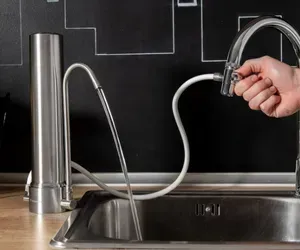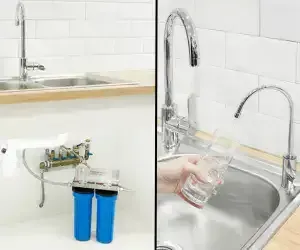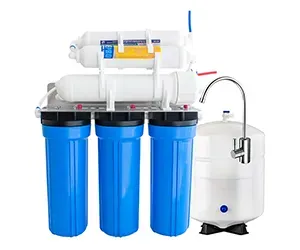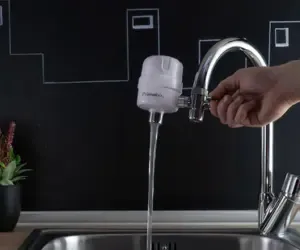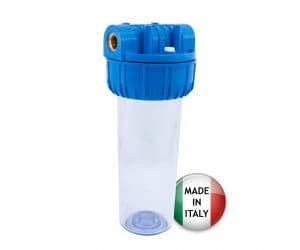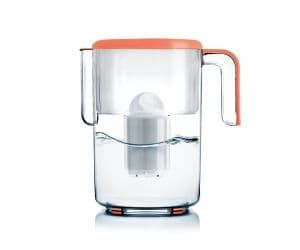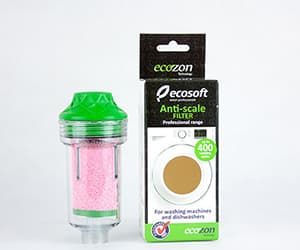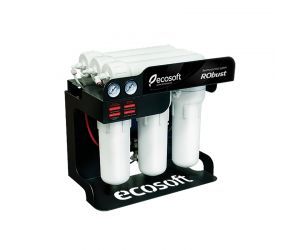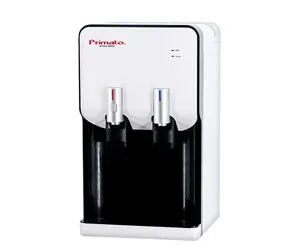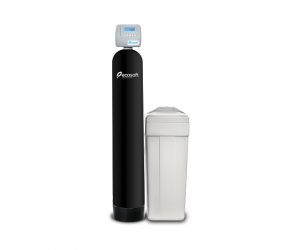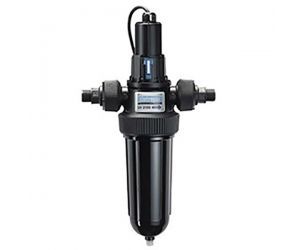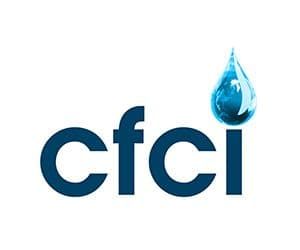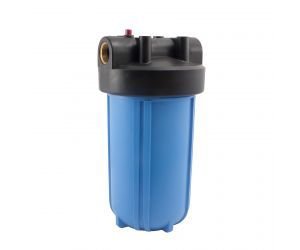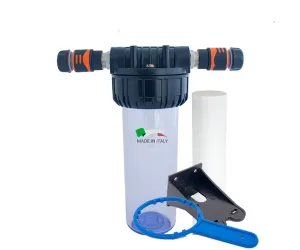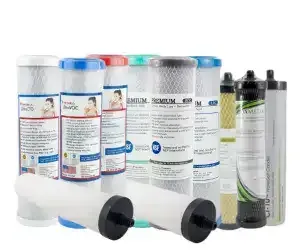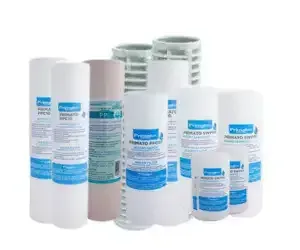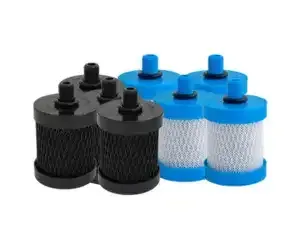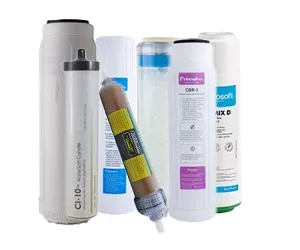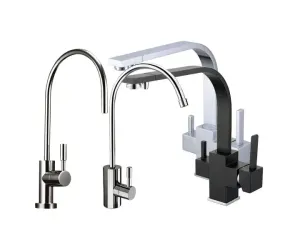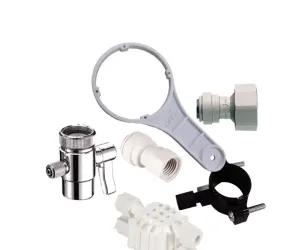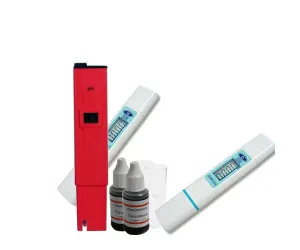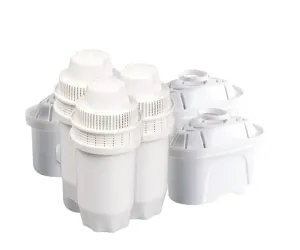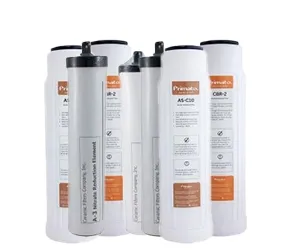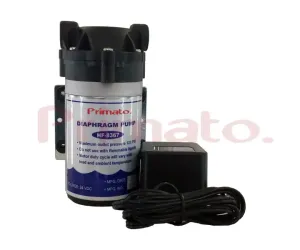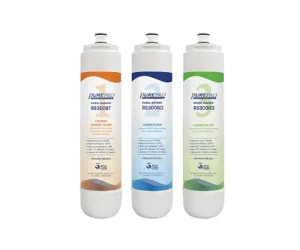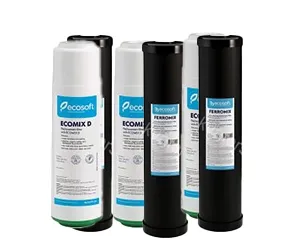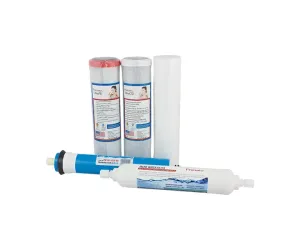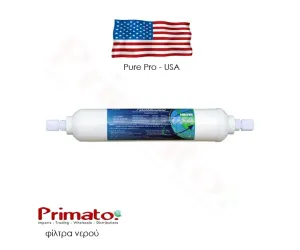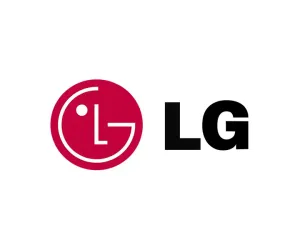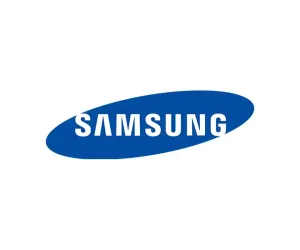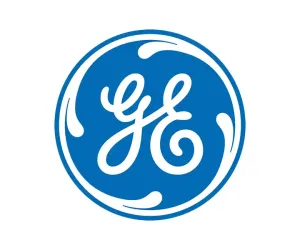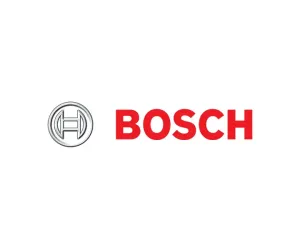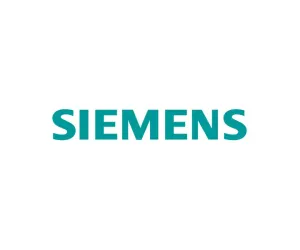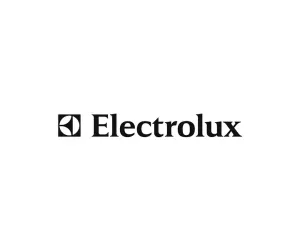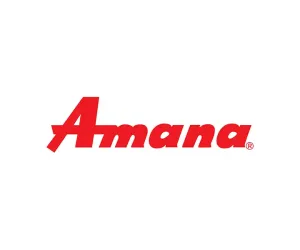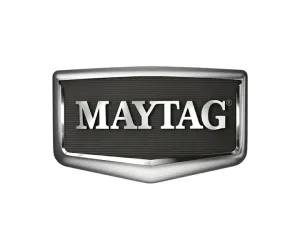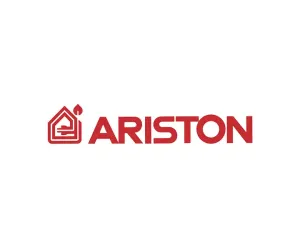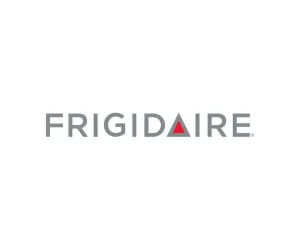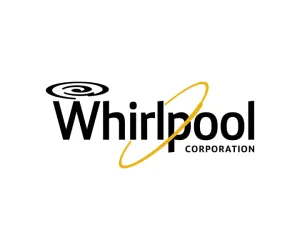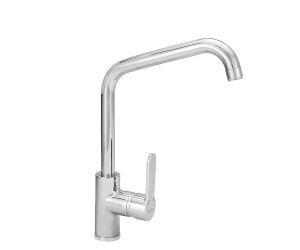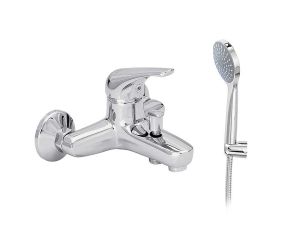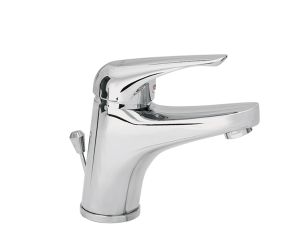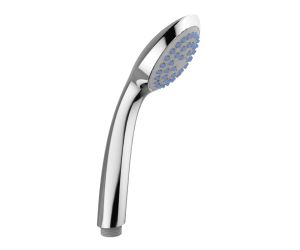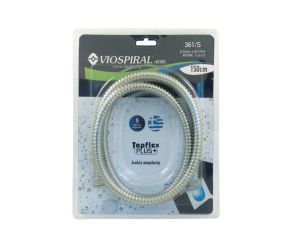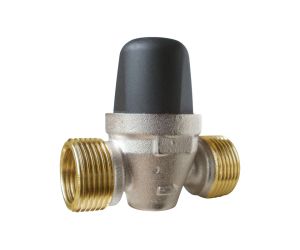Thessaloniki Water: From the source to the glass
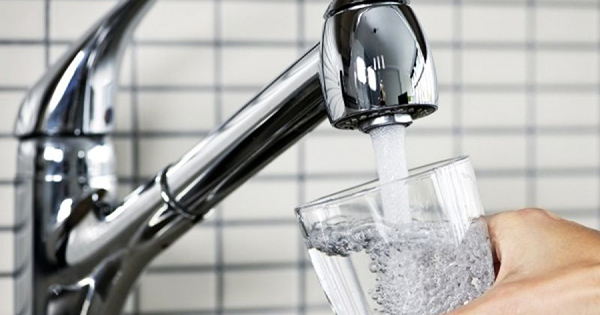
Thessaloniki needs in water are met by various sources, namely by the Aravissos and Axios aqueducts, after special treatment at the refinery located in the area of Sindos. The aqueducts in the areas of Narres, Sindos and Kalohori are not currently in use, but are fully operational and ready to cover any urgent needs of the population or as an alternative to failures or inadequacies of the key sources.
Main water sources
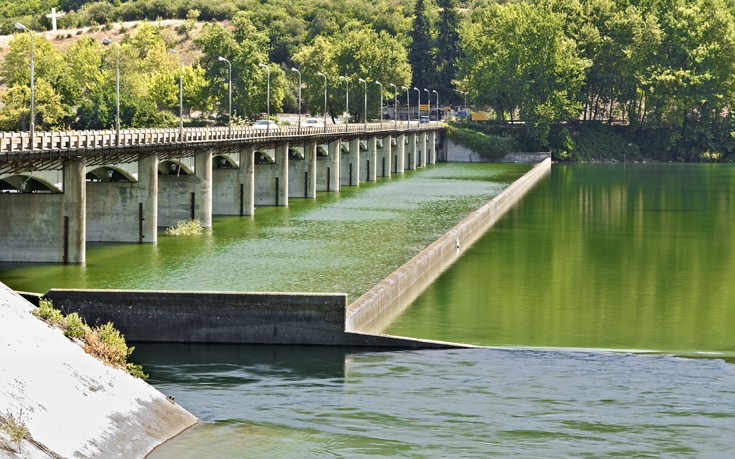
Aravissos
The springs of Aravissos, at the southern outskirts of Mount Paiko in Pella, supply the city of Thessaloniki with drinking water through the natural karstic cavity of the mountain, where the underground water outlet exits and watercourses end up. The water supply from these sources varies from 65,000 m3 to 130,000 m3 per day, depending on the annual snowfall and precipitation.
Aliakmonas
Aliakmonas and, in this case, the dam of its deflection near the village of Agia Varvara, situated approximately 40 kilometers from the estuary of the river, is the second main water suuply source of Thessaloniki. The water, through a free flow of 50 km, reaches Axios river and from there ends up in the Sindos refinery for processing. The clean, drinking water is gathered in a 75,000 m3 tank and is distributed through a 36 km pipeline network to various water tanks in Diavata, Evosmos, Polichni, Neapoli, Vlatades, Toumba and Kalamaria, as well as in the Industrial Area.
Alternative sources
Kalochori: Boreholes in this area are not currently used for water supply, as the main sources sufficiently meet current needs.
Sindos: The 26 boreholes in the area provide 30,000 m3 of water per day.
Axios: The 46 boreholes in the wider area of the River Axios (Gefyra, Chalkidona, Eleousa and Agios Athanasios) provide about 70,000 m3 per day.
Narres: This water supply starts from the bed of the River Gallikos and ranges from 5,000 m3 to 25,000 m3 per day, but is currently inactive.
Agia Paraskevi: The aquifer in the area of Chortiatis is used as a complement to meet the needs of the particular Municipal Department and is a backup source of water supply to G. Papanikolaou Hospital.
Mikra - N. Rissio: The 6 boreholes in Eastern
Thessaloniki provide 4,500 m3 of water and supplement the Kalamaria
water tank daily, but are not currently used.
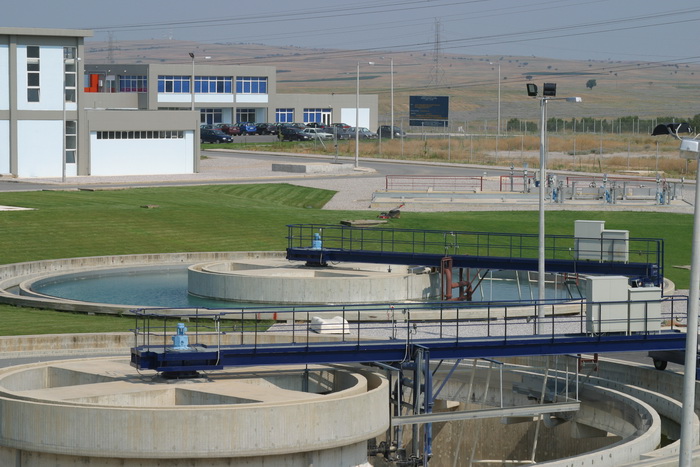
Water treatment
At the Water Treatment Plant of Thessaloniki in the Industrial Area of Sindos, 150,000 m3 of water undergo daily treatment and chlorination so that it is potable and safe for the population. Chlorine is the most cost-effective means of water decontamination in urban water supply systems worldwide. However, both chlorine and its spinoffs, such as chloroform, give water a distinct and unpleasant taste and odor.
In cases of repairs in the water supply system due to
accidental damage or permanent wear in specific pipelines (such as in
2018, when the local water supply network was damaged three times
within two months), the water is hyperchlorinated by adding more
chlorine to replenish the quantity that leaked out. As a result, the
drinking water that reaches several households in Thessaloniki
contains extra amounts of chlorine, which deteriorates its taste and
smell.
The purchase and installation of household
water filters is an
immediate, safe and cost-effective solution to this problem.
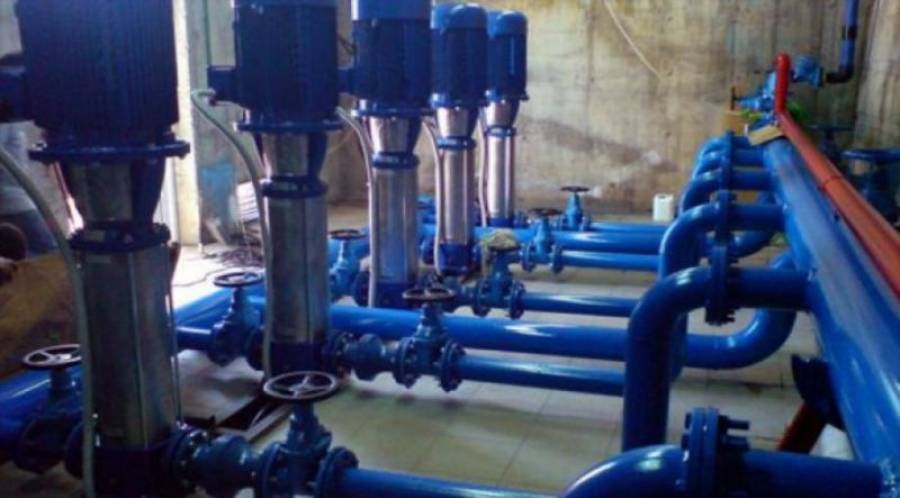
Water supply network
The water is distributed in Thessaloniki through a pipeline and pumping network, which gives it a boost to reach every part of the city. However, this water supply network is quite old, with the problems due to its deterioration becoming noticeable in recent years. All citizens of Thessaloniki remember that, in March 2018, a part of the obsolete pipeline system broke, leaving a large proportion of the population without water for 5 days.
When the Aravissos water pipeline system was
completed in 1978, the manufacturers estimated its life expectancy
would be 40 years. However, these forecasts appear to be quite
optimistic and unreasonable as the pipeline is located at a depth of
3 meters and its length reaches 60 kilometers, which makes it
extremely difficult to maintain consistently and to restore the
damage promptly. If a part of the pipeline breaks or perforates, as
in March 2018, the exact point of the damage must be located, an
excavation must be made, the particular point must be isolated and
emptied out, resulting in the water supply being shut down, then it
must repaired or replaced and, finally, there is a waiting period
until the water is clean. Since the water supply network in
Thessaloniki is quite worn, it is very likely that events such as
those in 2018 will happen again and again.
Recent posts
- Well Water in Greece: What’s Really in It and How to Make It Safe
- NanoMetix 10" 0.01μm Water Filter | Advanced Nanofiltration Against PFAS & Microplastics
- The Future of Water: How Primato Filters are Pioneering New Standards in Water Safety
- Primato's Journey at Aquatech Amsterdam: Building Bridges and Expanding Horizons
- The Journey of Water: From Source to Tap - Understanding the Filtration Process
- What are three way water filter taps?
- Shower water filters
- Commercial water filters for hotels, restaurants and cafes
- The reason why more and more people prefer undercounter water filters
- Zeolites in water treatment
- The water supply network of Athens
- The whole truth about water filters
- Russian water filters with aragonite - Purchase guide
- Choosing and buying a countertop water filter
- I live in Athens. Do I need a water filter?
- Water Filter Prices: Full Guide
- Does filtered water help with allergies?
- 10+ reasons to add more water to your lifestyle!
- Zeolite: A natural mineral in the service of water filtration
- Thessaloniki Water: From the source to the glass
- Meet the Greek Water Filters Manufactured in Thessaloniki
- Water Filters with Zeolites
- Turning a coconut into activated carbon
- Thessaloniki: Which Are The Best Water Filters?
- Tap water in Greece: Is it safe? The problems and the solutions
- How to Choose the Right Replacement Filter
- Ultra filtration and Hollow Fiber Membranes explained
- How hard is water in Thessaloniki?
- Whole house water filter cartridges - How to choose the right one!
- Countertop water filters - What to look for before I buy
- Do I need a water filter if I live in Athens?
- Everything you need to know about tap water filters
- Under-sink water filters - Everything you need to know
- Reverse Osmosis - What is it and how it works
- World Water Day - 22 March
- Primato goes sailing!
- What is the activated carbon found in our water filters?
- What are water filters?
- Reverse Osmosis - Perfect for islands, drilling water and aquariums
- Hexavalent Chromium - A Carcinogen That Should Be Reduced Immediately!
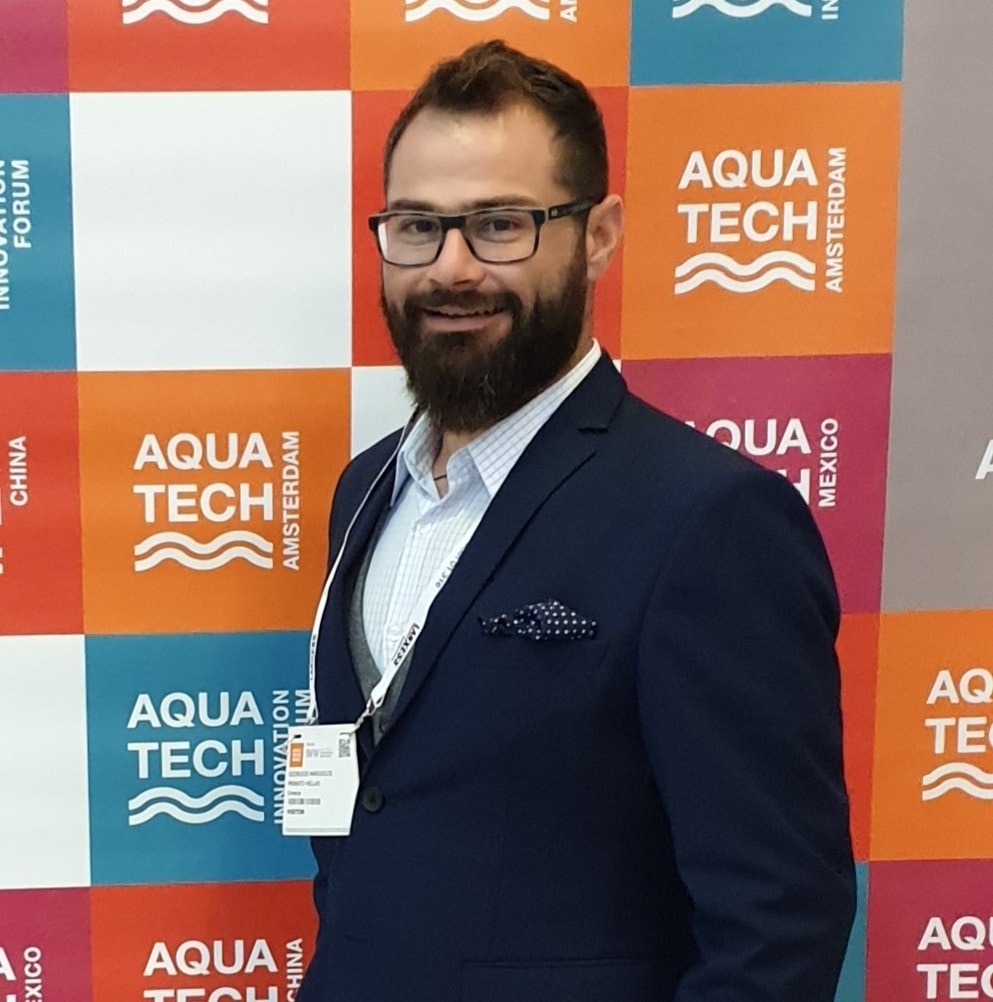
George Margiolos
George Margiolos was born in Thessaloniki and has graduated from the Department of Marketing of the Alexandreio Technological Educational Institute of Thessaloniki. He is fluent in English and (not so fluent) in German.
Ηe has been Project Manager at Avery Dennison - Fastener Division in the UK. There, his main project was to redesign the company's products into new applications so as to become more environmentally friendly. In combination with the fact that in the UK people are more familiar with water filters, he has developed a love for environmentally friendly water filters, which reduce the use of plastic bottles and improving people's quality of life.
Since 2008, he has published over 300 unique educational and informative articles on water filters and new water treatment technologies.
Occasionally, universities and doctoral students request to use George Margiolos' articles in their research because of their quality and uniqueness.
